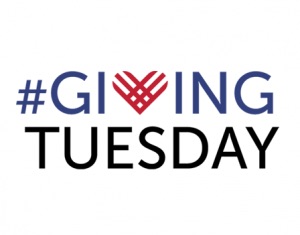Wellfie Wednesday Tip #80: How to be Successful with Your 2018 Goals!
/Welcome back! Happy Wellfie Wednesday! This week is brought to you by Alyssa @kuhnalyssa_spt.
Most people tend to think about creating a set of goals when the new year hits, a majority of them addressing some aspect of health and wellness. Some adhere to these goals and succeed in accomplishing these throughout the year, while some tend to fall off the wagon after about a month or two. The question is, how can we prevent this from happening? How can we keep people committed to improving their health? It is relatively common knowledge that exercise is good for us and has an overwhelming number of health benefits. It can also prevent many diseases and decrease the risk for hospitalization in people of all ages-so we need everyone to stay on board. There are a few strategies that I have come across that can help you stay on track if you find yourself falling off the wagon come February and March.
1. The most effective, in my opinion: Find someone you can work with to stay accountable. It can be a friend, coworker, family member, significant other, personal trainer, etc. When you have someone who is counting on you to show up to the gym or to enter your food log, many people are more likely to be successful. When you don’t want to show up to the gym or when you want to eat those cookies in the office, having someone that is counting on you to stay committed can really help you in those times of difficulty. If there isn’t someone that comes to mind that could help, going to group exercise classes or joining an online group of people with similar goals can also be very effective!
2. Keep a calendar and have a plan: sometimes physically writing down or typing out a plan can help you stay on track. For example, writing out days you will work out and the workouts you will be doing can be helpful on the days that you don’t feel like going to the gym because you don’t know what you will do when you get there. Also planning something that help you mentally prepare to accomplish it that day instead of always making decisions on the fly.
3. Be prepared. Many people tend to make unhealthy food choices when they are in a hurry or when they don’t have the energy to prepare a lunch or a dinner and need something quick. Meal prepping is such an easy way to help combat this! Taking 1-2 hours on the weekend or in the beginning of the week to prepare healthy meals is SO worth it. When you have everything prepared and already made, you are much more likely to stick to a plan!
4. Have an open mind. Sometimes people tend to stop exercising due to pain they are experiencing and automatically go down the rest and medicate route. For most musculoskeletal injuries, rest can actually make things worse! Our bodies are meant to move and medication seems to just mask the problem. Having an open mind to other ways to address pain is key to your success with your health goals! When people fall into long periods of rest, it is so much harder to get back into the swing of things. Seeking help right away for guidance as to how you can ACTIVELY manage your pain can be huge in maintaining compliance with your goals. Low back pain is a great example. There are many people that experience low back pain in their daily lives. For most chronic situations, movement is actually the best treatment but some turn to passive treatments such as medications and sedentary lifestyles. Finding a licensed professional you trust to give you a structured and safe exercise program can help you improve your pain and prevent it from reoccurring!
Keeping these 4 strategies in mind, hopefully we can all stick to our goals and keep living our best lives strong, healthy, and pain-free! Thanks again for all of the #WellfieWednesday support, be sure to post your pictures this week and tag the WW crew members in your post (@TheFuelPhysio, @Eric_in_AmERICa, @AaronPerezPT, @DianaKlatt, @kuhnalyssa_spt) and keep the wave of healthy change going!



















